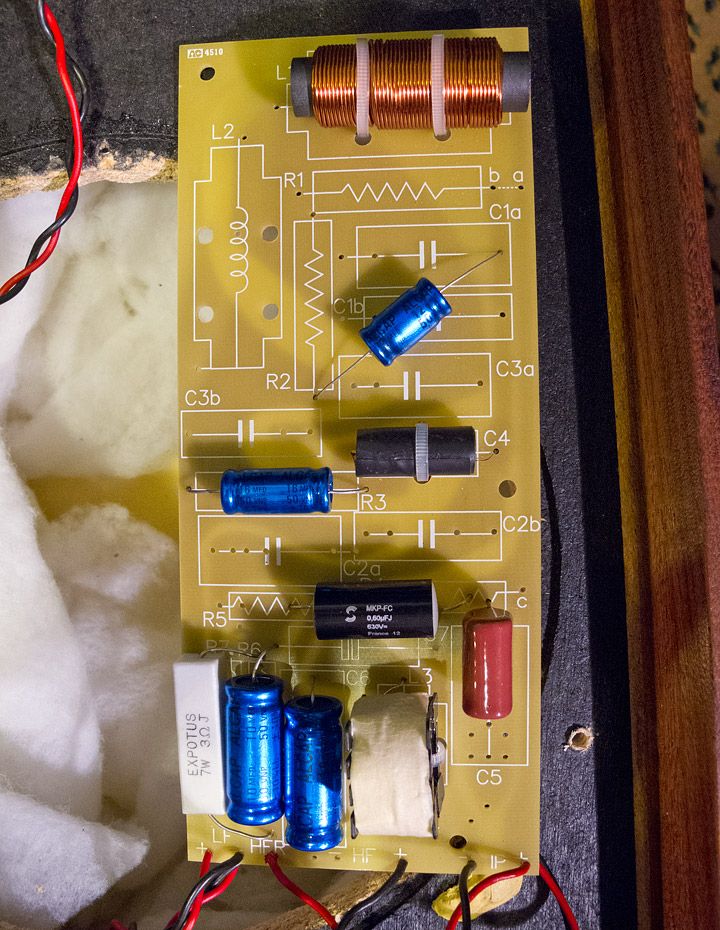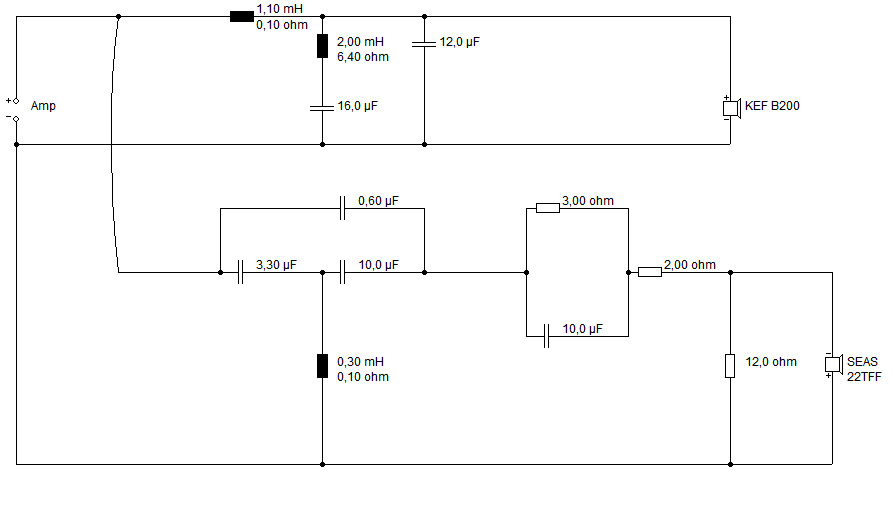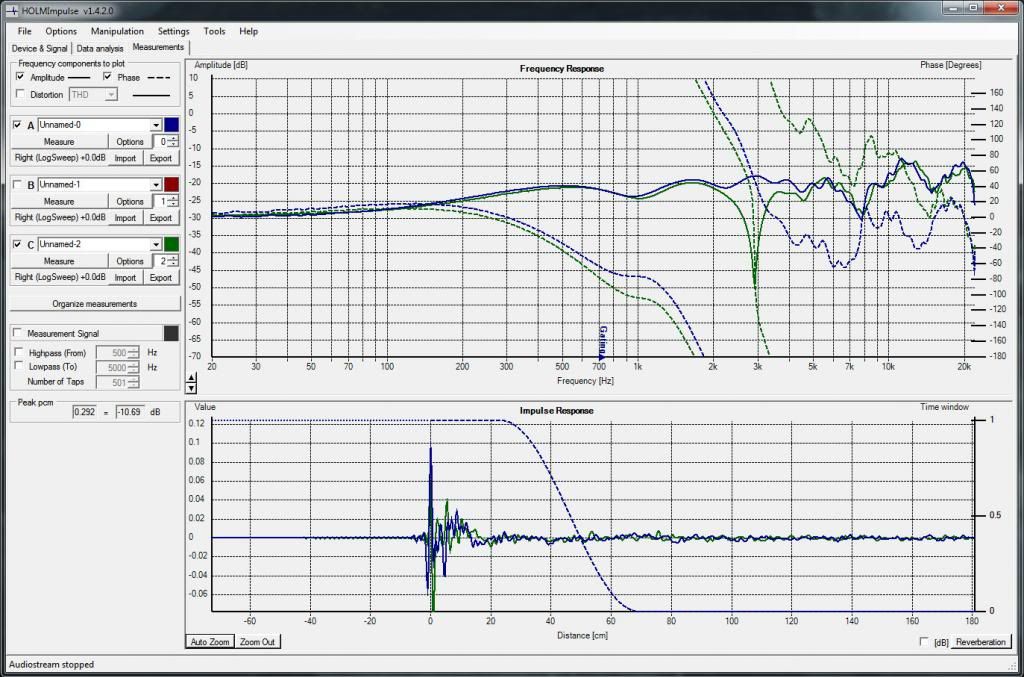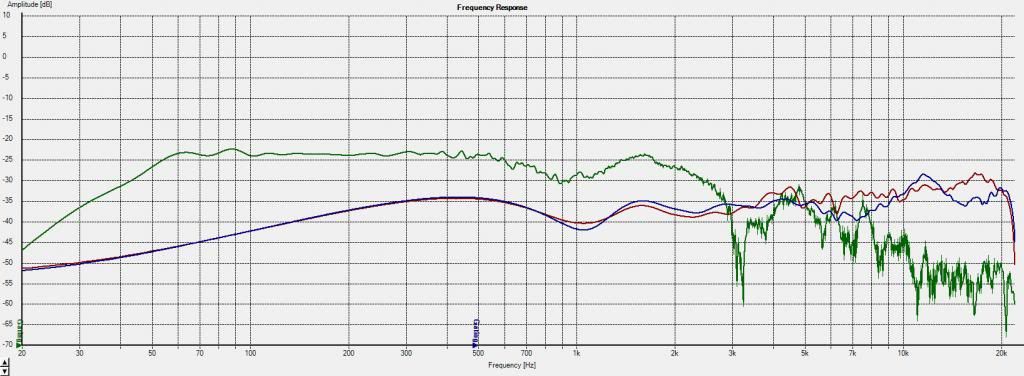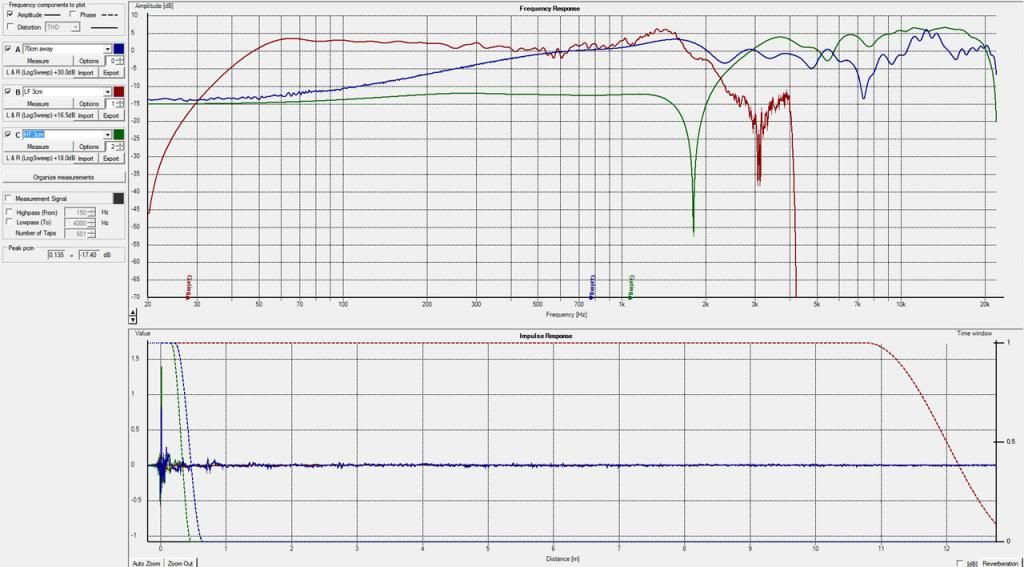So far I've built 2 sub woofers and 1 pair of full range multi way speakers. The sub woofers were significantly easier to design as there is no crossover to take account of nor is there
as much influence from the cabinet design provided it is an appropriate volume, shape and of sufficient rigidity/density.
For sub woofers, winISD is a decent piece of software for modelling. It's not perfect but it gets you in the ballpark. This was my first go, which I designed and built during my GCSE's for D&T 15 years ago. It received an upgraded driver in 2015 as the original whilst still working fine wasn't the best quality due to cost constraints.
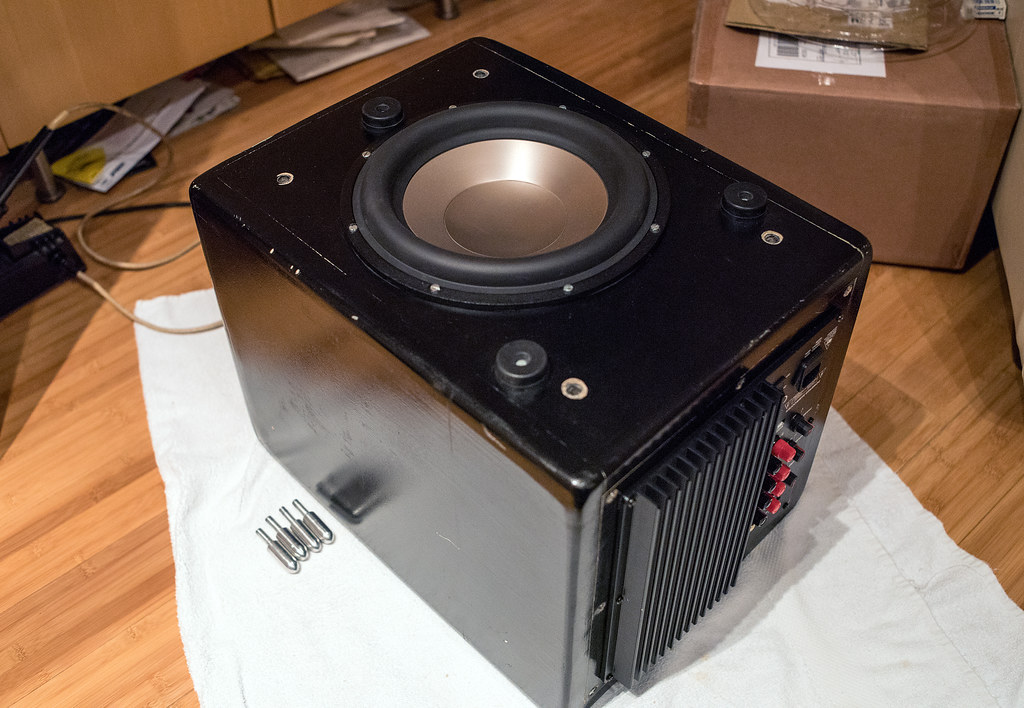
This was the difference in sheer size even though they both fit in the same aperture. The weight difference was also huge.

Red shows original design, blue shows the replacement driver. Significantly less boomy above 50Hz and better low end response.
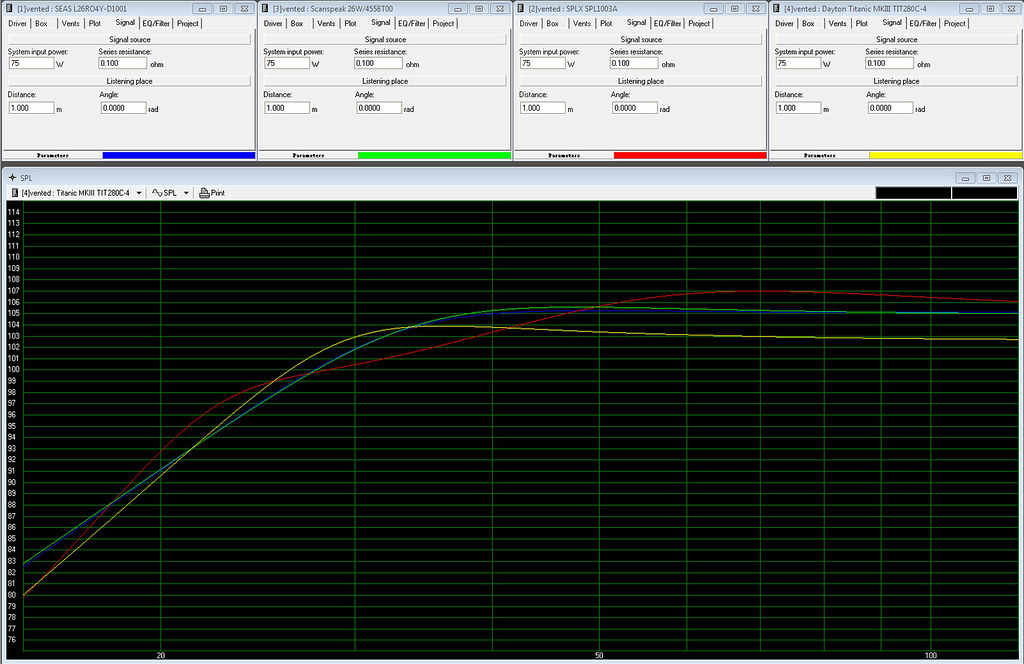
Sub 2 was built last year. Designed to be more compact than the previous and of a better finish.
Response in green. Vs the one above in blue. Better response again, but it came at the cost of reduced efficiency.
Designing a full way speaker was a lot harder. Rather than building a cabinet from scratch, I utilised an old cabinet and selected my own choice of drivers. I chose to combine some vintage KEF B200 SP1063 bextrene woofers with some modern SEAS 22TFF tweeters which would produce a design similar to the original KEF Chorale. The crossover had to be built to the KEF design to get a base and then tweaked from there to suit the non standard design. To do this properly, you need appropriate measurement equipment.
This was the built cabinet.
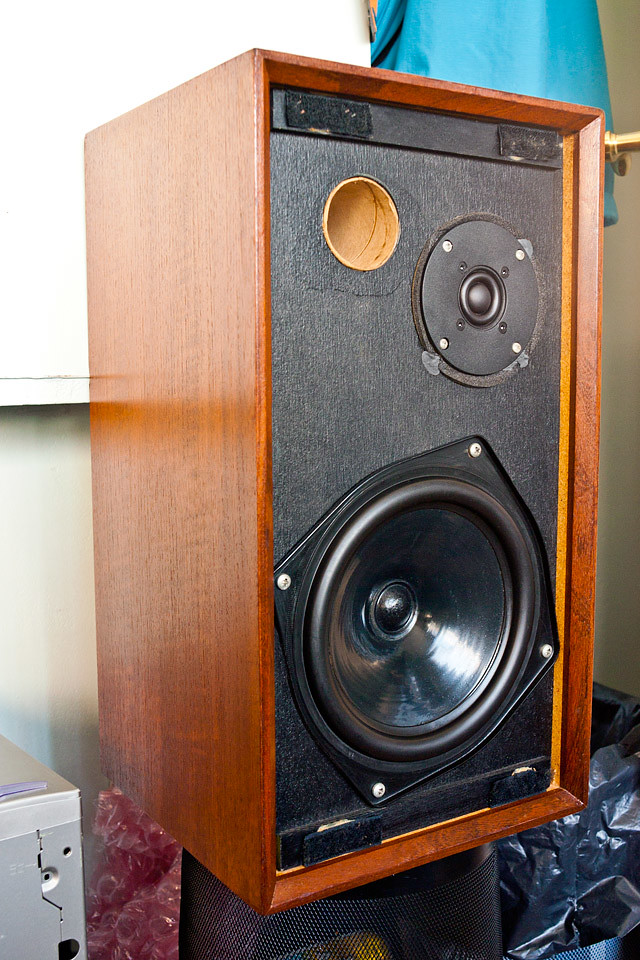
Crossover as built.
L-pad on tweeter was directly across the terminals.
Connected up and tested, the following things were noticeable when tested, tweeters in anti-phase as per the original KEF design didn't work. Notice the green plot has a huge dip at 3KHz. Putting the tweeter in phase as per the blue plot solved the problem.
Also notice the dip around 1KHz. This is caused by the KEF notch filter in the crossover. Damping the filter out using a 10 ohm resistor flattened out the response.
Final response plot as measured, after many hours of tinkering. This plot doesn't fully take into account the issues that the front baffle would introduce as it's a nearfield measurement.
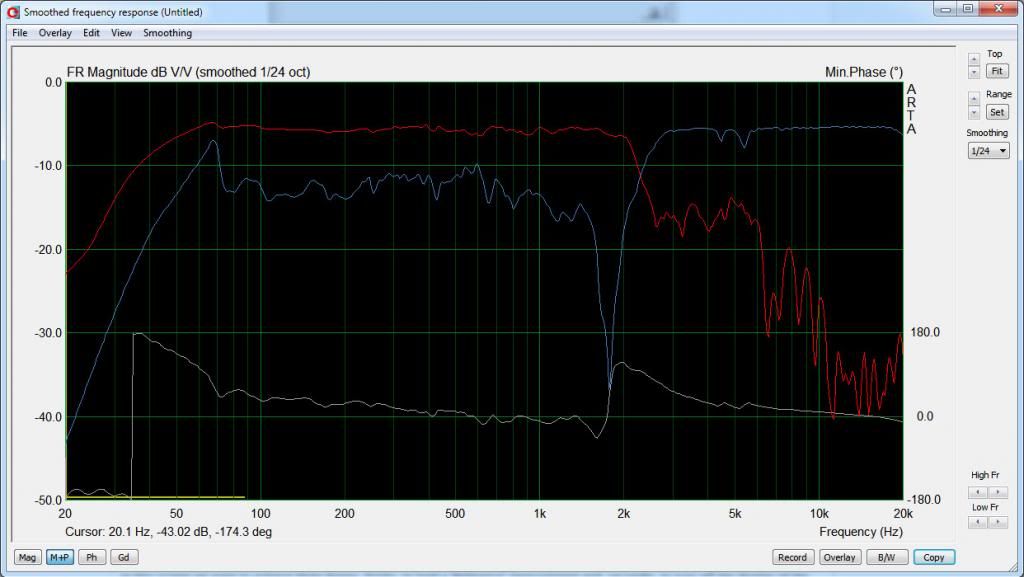
The end result was actually remarkably good. By no means a super accurate speaker but it was certainly better than average. I had to aperiodically damp the cabinet, which basically meant stuffing the ports with foam. It's problems mainly related to the cabinet and the use of the antique bextrene woofer. The front baffle edges protruding so far out and my not flush mounting the woofer will have some strong effects on the overall response smoothness. There is also the fact that the cabinet followed the old BBC design ethos of thin walls and no bracing and relying on damping materials on the cabinet walls to do the job. I quite like the design but it's a hotly debated topic. Most prefer the braced to the insane technique these days but not being the most skilled with wood means that I prefer not having to over-complicate the designs. The easiest way to flush mount drivers would have been to double skin the main baffle with larger cutouts but the seconds skin would need to be the appropriate thickness.
Once fully built, they were pretty decent looking too. They finally got replaced by a pair of Tannoy 10" Super red monitors. By comparison, the DIY speakers sound a little bright and lack some refinement in the mid and very low range, but this is slight.









